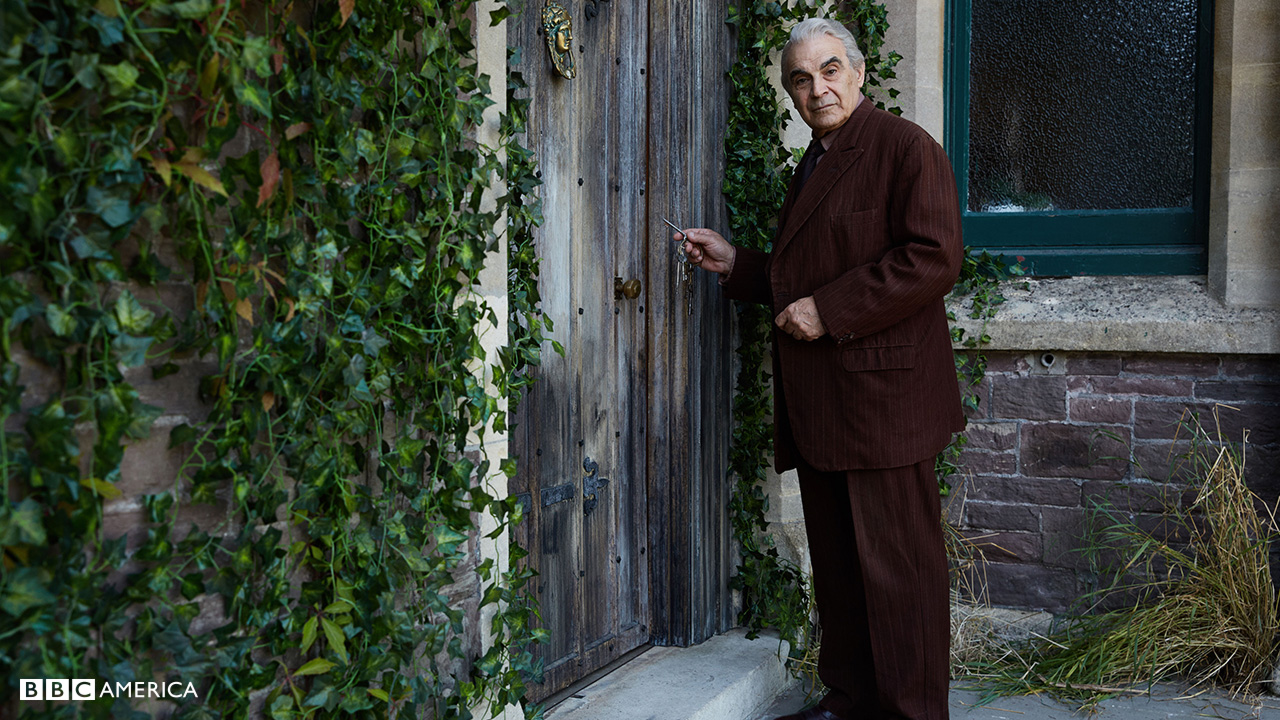'Doctor Who': 10 Things You May Not Know About 'Knock Knock'
There are precedents for "Knock Knock" in Doctor Who, the domesticity of "The Sign of Three," and the creeping unease of old buildings in "Blink" in particular. But this is a new sort of story, one which emphasizes both the side of a companion's life that is not concerned with the Doctor, and the emotions of the story's principal 'baddy'. It's a story of wild nature and primal feelings, and how badly astray you can go by trying to do the right thing.
Here are a few things to keep an eye out for, the next time you watch (through your fingers):
Mike Bartlett, who wrote this episode, originally planned for the character Harry to be the grandson of the Fourth Doctor's beefy companion Harry Sullivan. He told Doctor Who Magazine: “It was a reference I enjoyed hugely, because I love Harry Sullivan. And housemate Harry has, I think, a similar sort of attitude, of energetic sort of pluck. It was decided that, in 2017, people might not remember one companion from 40-odd years ago. So it got cut.”
https://www.youtube.com/watch?v=K3CWXqUqPFA&t=86s
Note: it was Harry's other grandfather who tried to pinch a bit of the Great Wall of China.
"Sleep is for tortoises" is an echo of a line from the Fourth Doctor, in "The Talons Of Weng-Chiang", raising the question of whether the Doctor actually sleeps when he's not unconscious. He goes on to say he only sleeps if he's regenerated (as happened with the Third, Fifth, Seventh, Eighth, Tenth and Twelfth Doctors) or "had a big lunch," which is a reference to the Sixth Doctor adventure "The Two Doctors," in which the Second Doctor falls asleep after a large meal in Seville, while being transformed into an Androgum. There again, the Eleventh Doctor fell asleep a lot in "Amy's Choice," so it's not as if he doesn't get snoozy from time to time.
David Suchet, who played the Landlord, is best known to British TV viewers from his many years playing Agatha Christie's Belgian detective Hercule Poirot, from 1989 to 2013. Peter Capaldi appeared in a 1991 episode of Poirot called "Wasps' Nest", which is very interesting, considering that the Tenth Doctor met Agatha herself in "The Unicorn and the Wasp"
https://www.youtube.com/watch?v=GnhQmn-k-Fg
It's often been left deliberately unclear whether the Doctor has a medical degree or not. His knowledge of biology is strong, and the Second Doctor claimed to have got his medical qualifications in Glasgow in 1888 (which may not have prepared him for the rigours of modern medicine in any case). The Third Doctor claimed to be a doctor of "practically everything," but both the First and Fourth Doctors fought shy of being labelled as medical practitioners, although the Second, Fourth, Eighth, Tenth and Eleventh Doctors all carried a stethoscope in their pockets.
Although the Doctor mentions the Time Lords and their high collars, this wasn't seen as part of their costume until the 1976 story "The Deadly Assassin". Before that, all we'd seen of the people of Gallifrey were the Meddling Monk, as met by the First Doctor in "The Time Meddler," the Time Lord tribunal that exiled the Second Doctor to Earth (and triggered his regeneration) at the end of "The War Games", and the council that introduced The Second Doctor to the Third, and First, in "The Three Doctors". They wore colorful robes, but not the classic high collared Time Lord headpiece.
https://www.youtube.com/watch?v=EVGEO6NqHo8
The Doctor has a magic index finger. He has used it to tell the year ("Before the Flood"), in which direction the flight deck of a spaceship lies (the Eleventh Doctor in "Flesh and Stone"), which of the moons of Delta Magna he has landed on (the Fourth Doctor, "The Power of Kroll"), and, shockingly, the wind direction (the Seventh Doctor in "Battlefield", and of course the Twelfth Doctor here).
Although Bill's new housemates mock her affection for Little Mix—the very popular British pop band affilated with the UK version of The X Factor—in particular their hit "Black Magic", their frustrating househunt is sountracked by another Little Mix song, namely "Weird People":
https://www.youtube.com/watch?v=mutmwnYlbpM
David Suchet made a curious link to the house in which this episode was filmed. Already famous in Doctor Who circles as being the location for parts of "Blink", Fields House, a Grade II-listed Victorian building in Newport, had a more direct association for him, as he told Doctor Who: The Fan Show:
"This house in which we filmed, which was just outside Cardiff in Wales, and the Christmas before we all decided as a family to actually rent a house for Christmas because there was so many of us. So, we all chipped in and rented a house at Christmas.
“So when I suddenly realised that I was in the same house I completely freaked! It was only when I was by that front door – that famous picture of me with the key—and went in, did I realise this was the house we rented for Christmas!"
There are references to two classic Third Doctor stories in the dialogue, particularly when Paul says "Maybe it’s a little doll that's come to life..." (which happens in "Terror of the Autons") and Shireen answers, "Or a massive freaky spider!" This would refer to The Great One, a huge spider queen from Metebelis 3. She not only imitated the Doctor and Sarah Jane Smith, but sang "Pop Goes the Weasel," a song we later hear played on the piano by whoever the Doctor has stored away in his vault.
And of course, the title of the episode has to be a reference to the best known knock knock joke of all time:
"Knock knock"
"Who's there?"
"Doctor"
"Doctor who?"
"EXTERMINATE!"
NEXT: 10 Things You May Not Know About ‘Oxygen’
Now go back and read the entire 10 Things You May Not Know About Doctor Who archive.
